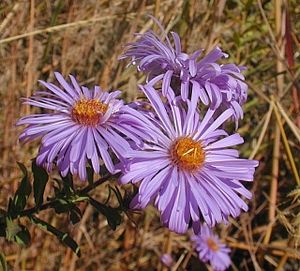Beat the Heat with Drought Tolerant Ornamental Natives
When the heat index hits 100 degrees, it's enough to make even the most veteran gardeners hang up their gloves. It seems no amount of water can revive our heat-stressed flower gardens and lawns. But native wildflowers and grasses are right at home in our Midwest summers. So why not add some native color to your landscape?

Durable native plants offer a lavish variety of colorful blooms and textures for our gardens, containers and cut bouquets and owe their toughness to thousands of years of adaptation to our climate's high summer temperatures and unpredictable rainfall. Native plants have also evolved with their region's wildlife.
Dozens of our native wildflowers are blooming right now including Sweet Black-eyed Susan (Rudbeckia subtomentosa) and Orange Black-eyed Susan (Rudbeckia fulgida). Plant either of these prairie species to add a dazzling display of golden yellow flowers with dark brown dome-shaped centers in the middle of summer. Don't let the name 'Rattlesnake Master' scare you away! Eryngium yuccifolium offers a stunning architectural element to summer gardens and unique cut bouquets. Stout stems from two to five feet in height have dusty blue-green leaves and hold rough, prickly, ball-shaped flower clusters aloft. The color of Rattlesnake Master is especially pretty paired with the purples of Purple or Glade Coneflowers and Blazing Stars.
Native prairie grasses are also great choices for the summer landscape. Prairie Dropseed (Sporobolus heterolepis) has very thin, emerald green leaves that form a dense arching tuft. Its seed heads that form in August give off a distinct aroma reminiscent of popped corn. June Grass (Koeleria macrantha) is a low, bunching grass, up to 18", with a great blue-green color that is effective along the edge of beds.
In addition to using plants of the upland prairie for summer gardens, consider those found on thin-soiled, rocky Ozark sites called glades. For example, Missouri Primrose (Oenethera macrocarpa) has large, soft-petaled, yellow blossoms that belie its toughness. This beauty shuns watering and performs equally well in sunny beds or containers.
If your landscape has dry, sunny areas, choose native species found on upland prairies or glades for a more carefree summer garden. Like any other addition to your garden, remember to water your new plants well after planting and regularly until they are established, about a month or so. While natives do not need fertilizers, use of a root stimulator or an organic soil conditioner at planting can ease shock and encourage new root growth. Visit Critical Site's Prairie and Wetland Center at Belton to find resilient native plants and a full line of organic planting amendments to create beautiful, low-maintenance landscapes for your summer and early fall landscapes.
